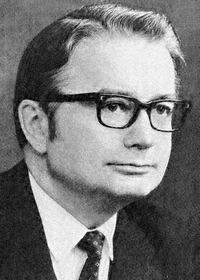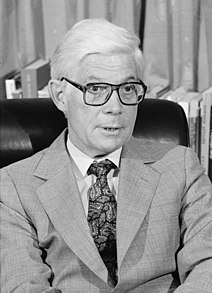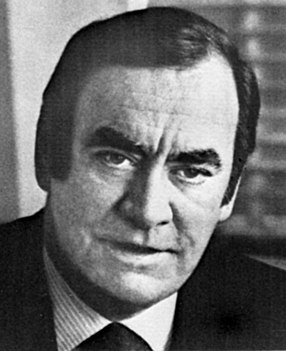
The 1980 United States presidential election was the 49th quadrennial presidential election. It was held on November 4, 1980. Republican nominee Ronald Reagan defeated incumbent Democrat Jimmy Carter. Due to the rise of conservativism following Reagan's victory, some historians consider the election to be a realigning election that marked the start of the "Reagan Era".

The 1984 United States presidential election was the 50th quadrennial presidential election. It was held on Tuesday, November 6, 1984. Incumbent Republican President Ronald Reagan defeated former Vice President Walter Mondale, the Democratic candidate.

The 1964 United States Senate elections coincided with the election of President Lyndon B. Johnson by an overwhelming majority, to a full term. His Democratic Party picked up a net two seats from the Republicans. As of 2019, this is the last time either party has had a two-thirds majority in the Senate, which would have hypothetically allowed the Senate Democrats to override a veto, convict and expel certain officials, or invoke cloture without any votes from Republicans. The Senate election coincided with Democratic gains in the House in the same year.
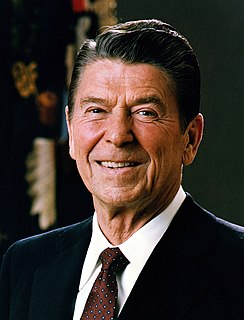
The 1980 United States presidential election in Vermont took place on November 4, 1980, as part of the 1980 United States Presidential Election which was held throughout all 50 states and the District of Columbia. Vermont voted for the Republican nominee Ronald Reagan of California and his running mate George H.W. Bush of Texas. Reagan took 44.37% of the vote to incumbent Democratic President Jimmy Carter’s 38.41%, a victory margin of 5.96%. Independent John Anderson took 14.90%.

The 1980 United States presidential election in New York took place on November 4, 1980. All fifty states and The District of Columbia, were part of the 1980 United States presidential election. New York voters chose forty one electors to the Electoral College, which voted for President and Vice President.

The 1980 United States presidential election in Massachusetts took place on November 4, 1980, as part of the 1980 United States presidential election, which was held throughout all fifty states and D.C. Voters chose 14 representatives, or electors to the Electoral College, who voted for president and vice president.

The 1980 United States presidential election in New Jersey took place on November 4, 1980. All fifty states and the District of Columbia, were part of the 1980 United States presidential election. New Jersey voters chose seventeen electors to the Electoral College, which selected the president and vice president.

The 1980 United States presidential election in New Hampshire took place on November 4, 1980, as part of the 1980 United States presidential election, which was held throughout all 50 states and D.C. Voters chose 4 representatives, or electors to the Electoral College, who voted for president and vice president.

The 1980 United States presidential election in Connecticut took place on November 4, 1980. All 50 states and The District of Columbia, were part of the 1980 United States presidential election. Connecticut voters chose eight electors to the Electoral College, who voted for president and vice president.

The 2016 presidential campaign of Lincoln Chafee, the 74th Governor of Rhode Island, and former United States Senator from Rhode Island, was formally launched on June 3, 2015. His campaign for the Democratic nomination for President of the United States in the 2016 election was his first campaign as a Democrat, after having previously been elected senator as a Republican, and governor as an independent. He received zero votes either formally or by write-in, meaning he got the fewest votes of any major party candidate in the Democratic or Republican Primaries 2016.

The 1980 United States presidential election in Rhode Island took place on November 4, 1980, as part of the 1980 United States presidential election.
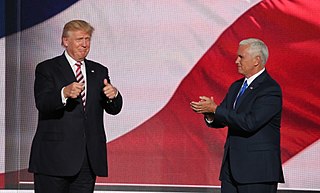
This article lists potential candidates for the Republican nomination for Vice President of the United States in the 2016 United States presidential election. Businessman Donald Trump of New York, the 2016 Republican nominee for President of the United States, considered several prominent Republicans and other individuals before selecting Governor Mike Pence of Indiana as his running mate on July 15, 2016. Pence formally won the vice presidential nomination on July 19, 2016, at the 2016 Republican National Convention. As the Trump-Pence ticket won the 2016 presidential election, Pence became Vice President of the United States on January 20, 2017.

This article lists running mates considered by Ross Perot during his 1992 independent candidacy for President of the United States. On March 30, 1992, Perot announced that retired Vice Admiral James Stockdale would serve as his "interim" running mate, so that Perot could qualify for the ballot in several states. At the time, Perot planned to pick a permanent running mate during the summer, around the time of the 1992 Democratic National Convention and the 1992 Republican National Convention. Perot suspended his campaign during the summer of 1992, possibly preventing him from choosing a different running mate. After he decided to run again, Perot decided to keep Stockdale as his running mate. John Silber, the president of Boston University, was also rumored as a potential running mate for Perot. Stockdale appeared at the 1992 vice presidential debate. The Perot-Stockdale ticket took 18.9% of the popular vote, but the Clinton-Gore ticket won the election.
This article lists running mates considered by Ross Perot during his 1996 candidacy for President of the United States. Following his 1992 independent candidacy, which attracted nearly twenty percent of the popular vote, Perot announced the formation of the Reform Party. Perot ran for president in 1996, and defeated former Colorado Governor Richard Lamm in the Reform Party primaries. On September 11, 1996, Perot announced his choice of economics professor Pat Choate as his running mate. Perot and Choate had previously co-authored the book Save Your Job, Save Our Country, which argued against the ratification of NAFTA. The Perot-Choate ticket took 8.4% of the popular vote in the 1996 election.
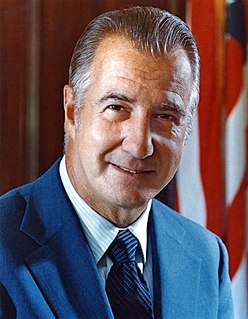
This article lists those who were potential candidates for the Republican nomination for Vice President of the United States in the 1968 election. After winning the Republican presidential nomination at the 1968 Republican National Convention, former Vice President Richard Nixon convened a series of meetings with close advisers and party leaders such as Strom Thurmond in order to choose his running mate. Nixon ultimately asked the convention to nominate Maryland Governor Spiro Agnew as his running mate. By a large margin, Agnew won the vice presidential nomination on the first ballot over Michigan Governor George W. Romney, who was supported by a faction of liberal Republicans. Nixon chose Agnew because he wanted a centrist who was broadly acceptable to the party, had experience with domestic issues, and appealed to Southern voters. The Nixon-Agnew ticket defeated the Humphrey-Muskie ticket, and also won re-election in 1972, defeating the McGovern-Shriver ticket. However, Agnew was forced to resign as Vice President in 1973 due to a controversy regarding his personal taxes.
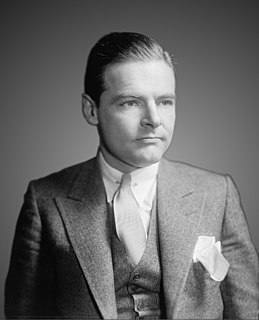
This article lists those who were potential candidates for the Republican nomination for Vice President of the United States in the 1960 election. After winning the Republican presidential nomination at the 1960 Republican National Convention, Vice President Richard Nixon needed to choose a running mate. President Dwight D. Eisenhower strongly supported UN Ambassador Henry Cabot Lodge Jr.. Though Lodge lacked charisma as a campaigner, his foreign policy experience and stature as ambassador made him an appealing candidate. However, Lodge was unpopular with the Republican right, who did not want a Northeastern moderate on the ticket. Nixon also strongly considered conservative Minnesota Representative Walter Judd and moderate Kentucky Senator Thruston Morton. After a closed session with Republican Party leaders, Nixon announced his choice of Lodge. The Republican convention ratified Nixon's choice of Lodge. The Nixon-Lodge ticket lost the 1960 election to the Democratic ticket of John F. Kennedy and Lyndon B. Johnson.

The 2020 United States presidential election, scheduled for Tuesday, November 3, 2020, will be the 59th quadrennial U.S. presidential election. Voters will select presidential electors who in turn on December 14, 2020, will either elect a new president and vice president or re-elect the incumbents. The series of presidential primary elections and caucuses are likely to be held during the first six months of 2020. This nominating process is also an indirect election, where voters cast ballots selecting a slate of delegates to a political party's nominating convention, who then in turn elect their party's presidential nominee.
The following is a timeline of major events leading up, during, and after the United States presidential election of 2020. President Donald Trump of the Republican Party, who was elected in 2016, is seeking reelection to a second term.
